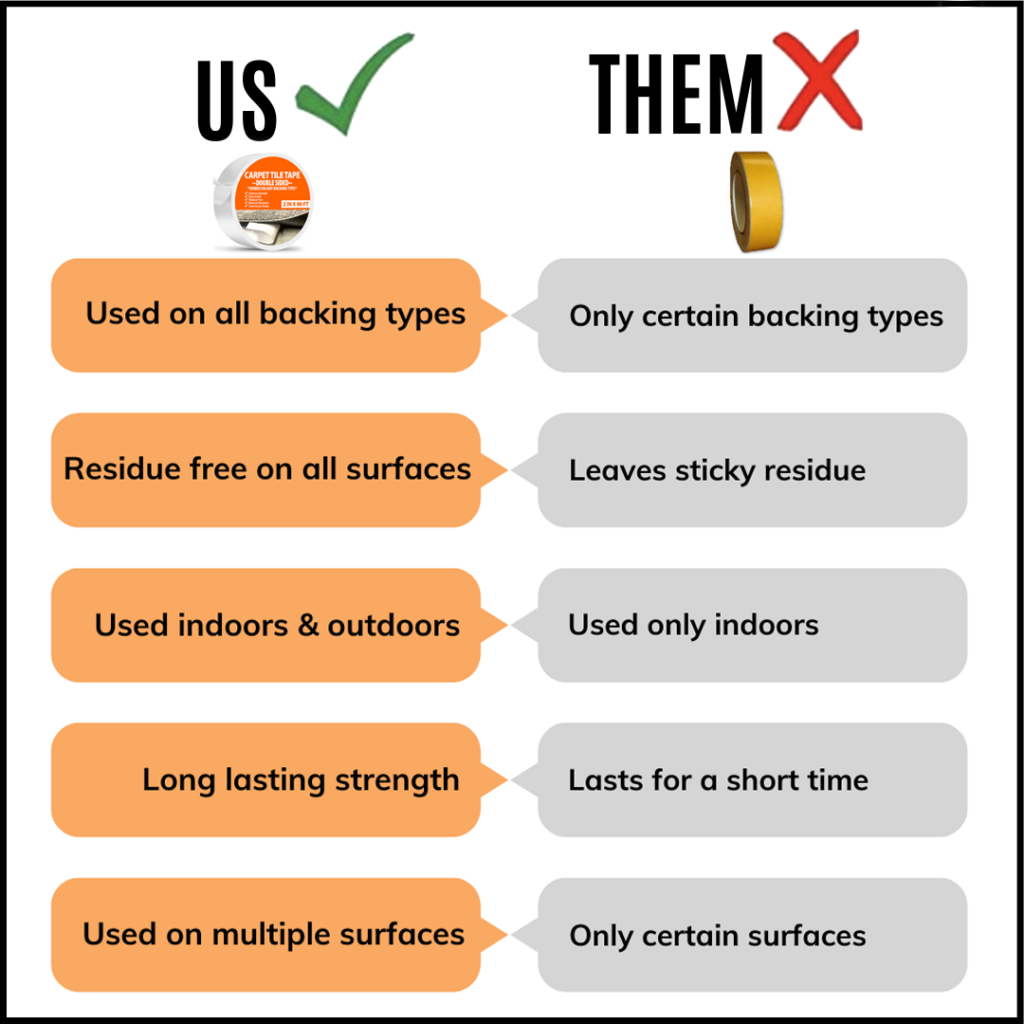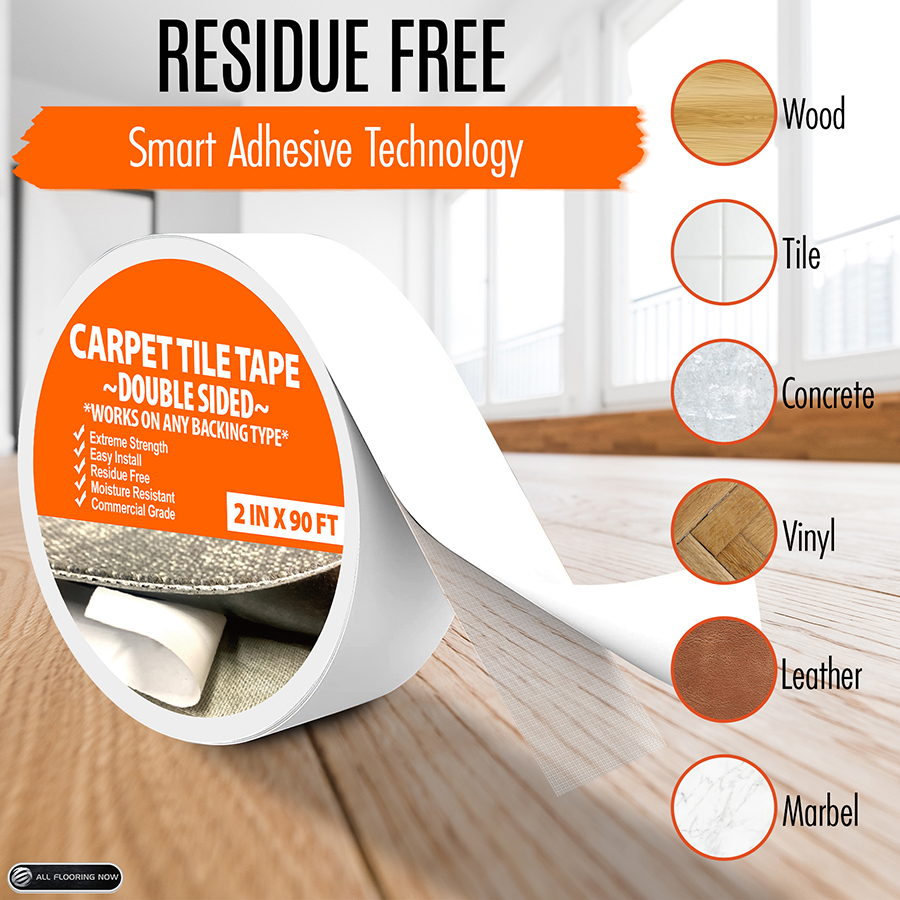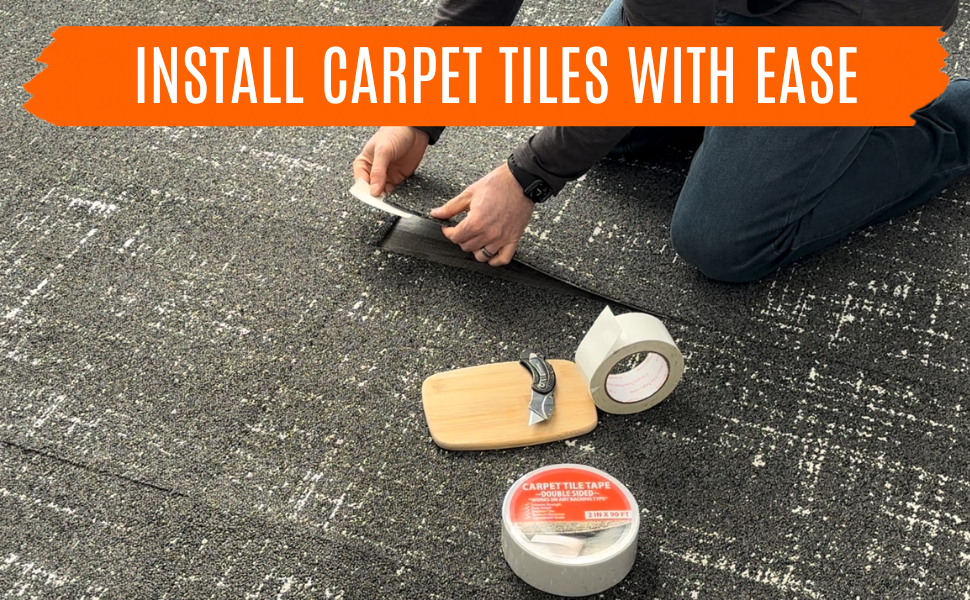How To Secure Carpet Tiles And Loose Rugs
Carpet tiles and loose rugs are a popular flooring solution for both residential and commercial spaces. They offer versatility, affordability, and ease of installation. However, one of the most common concerns with carpet tiles and loose rugs is how to keep them securely in place. Slipping, shifting, and curling edges can lead to safety hazards and reduce the aesthetic appeal of your flooring. The best solution? Carpet tile tape.
In this guide, we will explore various methods to secure carpet tiles and loose rugs, with a strong focus on using carpet tile tape—a simple, effective, and affordable way to keep your flooring in place.
Why Do Carpet Tiles and Loose Rugs Move?
Before diving into solutions, it's important to understand why carpet tiles and loose rugs tend to move or slip:
- Foot Traffic: High-traffic areas see constant movement, which can cause tiles and rugs to shift.
- Smooth Flooring Surface: Hardwood, tile, and laminate floors often lack the grip needed to hold rugs in place.
- Low-Quality Adhesives: If carpet tiles were installed using weak adhesives, they may not remain secure over time.
- Moisture and Humidity: Changes in humidity can cause carpet tiles to expand or contract, leading to movement.
- Vacuuming and Cleaning: The suction force from vacuuming can gradually lift and shift carpet tiles and rugs.
Solutions to Secure Carpet Tiles and Loose Rugs
There are several methods available to secure carpet tiles and rugs, but carpet tile tape stands out as the most reliable option. Let's explore different approaches:
1. Using Carpet Tile Tape
Carpet tile tape is a double-sided adhesive tape designed specifically to hold carpet tiles and rugs in place. It is easy to install, cost-effective, and does not damage the flooring underneath. Here’s how to use it effectively:
Step-by-Step Guide:
-
Clean the Floor: Ensure the floor is dry and free from dust, dirt, and debris.
-
Measure and Cut the Tape: Cut strips of carpet tile tape to fit the perimeter and key areas of the carpet tile or rug.
-
Apply the Tape: Peel off one side of the tape and adhere it to the back of the carpet tile or rug.
-
Secure to the Floor: Remove the top liner from the tape and firmly press the carpet tile or rug onto the floor.
- Check for Security: Walk over the tiles or rug to ensure they are properly adhered.
Benefits of Carpet Tile Tape:
- Strong adhesion without damaging floors
- Easy to remove and replace when needed
- Works on various surfaces, including hardwood, tile, and concrete
- Prevents curling edges and tripping hazards
2. Using Non-Slip Rug Pads
Non-slip rug pads are an alternative to carpet tile tape, providing a cushioned layer between the floor and the rug. While effective for loose rugs, they are less suitable for carpet tiles. However, if you prefer a non-adhesive option, a high-quality rug pad can help reduce slipping.
Pros:
- Adds cushioning and comfort
- Protects floors from scratches
- Easy to reposition
Cons:
- May not provide as strong of a grip as carpet tile tape
- Requires trimming to fit carpet tiles perfectly
3. Using Adhesive Sprays or Glue
For a more permanent solution, adhesive sprays or glue can be used to secure carpet tiles. However, this method is less flexible compared to carpet tile tape, as removing or replacing tiles later can be challenging.
Pros:
- Long-lasting hold
- Ideal for high-traffic areas
Cons:
- Difficult to remove without damaging flooring
- Requires careful application to avoid mess
4. Installing Transition Strips
Transition strips help secure carpet edges and prevent lifting, particularly in doorways or between different flooring types. This method is useful for keeping carpet tiles in place at room transitions but does not prevent shifting across larger areas.
Pros:
- Creates a smooth transition between flooring types
- Helps reduce wear and tear on edges
Cons:
- Only secures edges, not entire rugs or carpet tiles
- Requires drilling or adhesive installation
Best Surfaces for Carpet Tile Tape
One of the biggest advantages of carpet tile tape is its versatility. It adheres well to multiple surfaces, including:
- Hardwood floors
- Tile and stone flooring
- Concrete floors
- Low-pile carpet
Common Mistakes to Avoid When Securing Carpet Tiles and Rugs
To ensure your flooring stays in place effectively, avoid these common mistakes:
-
Skipping Floor Cleaning: Dirt and dust can weaken adhesion, so always clean the floor before applying carpet tile tape.
-
Using the Wrong Tape: Not all tapes are made for carpets—ensure you use high-quality carpet tile tapespecifically designed for this purpose.
-
Not Applying Enough Tape: Use ample tape coverage, especially in high-traffic areas, to prevent movement.
- Ignoring Edge Curling: If edges of carpet tiles or rugs start to curl, add additional carpet tile tape to secure them down.
Maintaining Secure Carpet Tiles and Rugs
Once your carpet tiles and rugs are secured, regular maintenance is key to keeping them in place:
-
Vacuum with Care: Use a lower suction setting or avoid vacuuming directly over the edges.
-
Reapply Tape as Needed: If certain areas begin to loosen, reinforce them with fresh carpet tile tape.
- Check for Moisture Issues: Excess humidity or spills can weaken adhesives, so keep an eye on any moisture exposure.
Conclusion
Securing carpet tiles and loose rugs is essential for safety, aesthetics, and longevity. While several methods exist, carpet tile tape remains the best solution due to its ease of use, strong hold, and damage-free removal. By following proper installation and maintenance techniques, you can enjoy a secure, slip-free flooring setup for years to come.
Whether you're dealing with a shifting area rug or installing carpet tiles in a busy commercial space, carpet tile tape is the ultimate tool to keep your flooring secure. Invest in high-quality tape today and say goodbye to loose, hazardous carpets!







